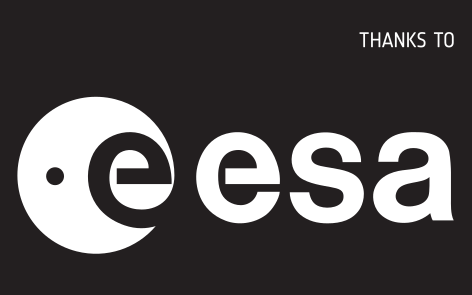Long period comets
Calculating long-period comet orbits under the simultaneous Galactic and stellar perturbations. (N-body problem with N of the order of 400).
more details: Królikowska, M and Dybczynski, P.A., 2020: The catalogue of cometary orbits and their dynamical evolution
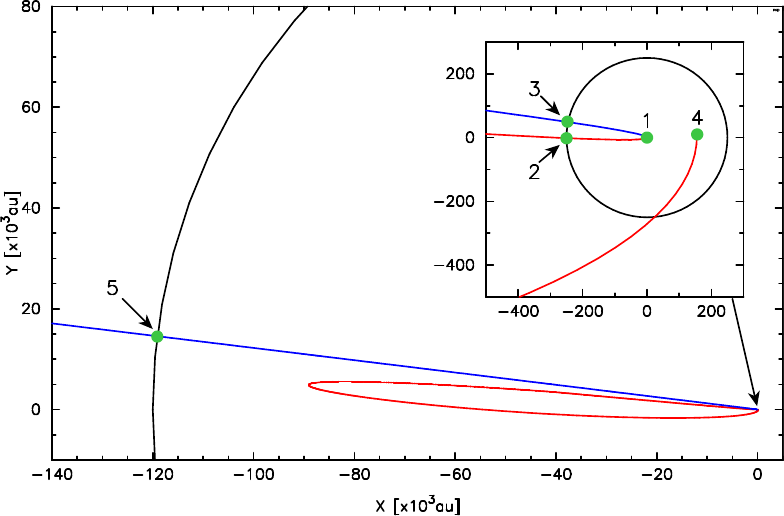
Orbital changes of C/2002 T7 projected on its original orbit plane that described by five snapshots in CODE catalogue. Red line depicts the past motion of this comet while the blue line depicts its future evolution. Five epochs (snapshots) when orbital elements are recorded are marked: 1 - osculating heliocentric orbit near the centre of the observational interval (typically near the perihelion); 2 - original barycentric orbit recorded in the past at 250 au from the Sun; 3 - future barycentric orbit recorded in the future at 250 au from the Sun; 4 - previous orbit, recorded at the previous perihelion; 5 - next orbit, in this case recorded at the escape border at 120 000 au from the Sun, but for many other comets recorded in the next perihelion.
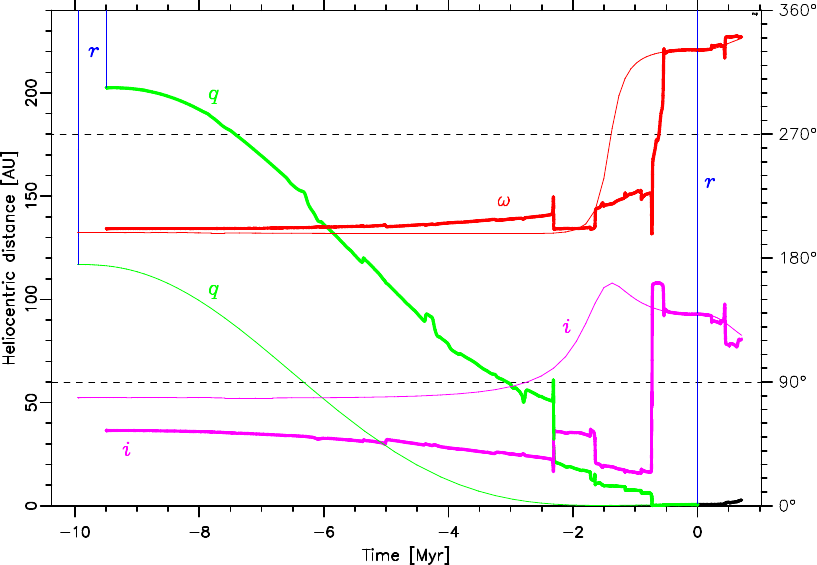
Dynamical evolution of the nominal orbit of C/2002 T7 LINEAR (d6 solution) under the simultaneous Galactic and stellar perturbations. The left vertical axis describes a heliocentric distance plot (thin blue lines) and a perihelion distance (green lines that turn black if e is above 1.0). The right vertical axis describes the angular elements (with respect to the Galactic disc plane): an inclination (fuchsia line) and an argument of perihelion (red line). Thin lines describe the dynamics when all stellar perturbations are omitted.
Stellar close approaches
The aim of this work is to investigate the proximity parameters and the influence of the close approach of stars on the basis of Gaia DR2 and DR3. Using a numerical integration in an axisymmetric Galactic model, we determine new parameters of the close encounter for stars. Adding ten thousand clones drawn with the use of a covariance matrix, we estimate the most probable position and velocity of stars at the minimum distance from the Sun.
more details: Berski, F and Dybczynski, P.A., 2020: Close approach parameters recalculated based on the first Gaia data release
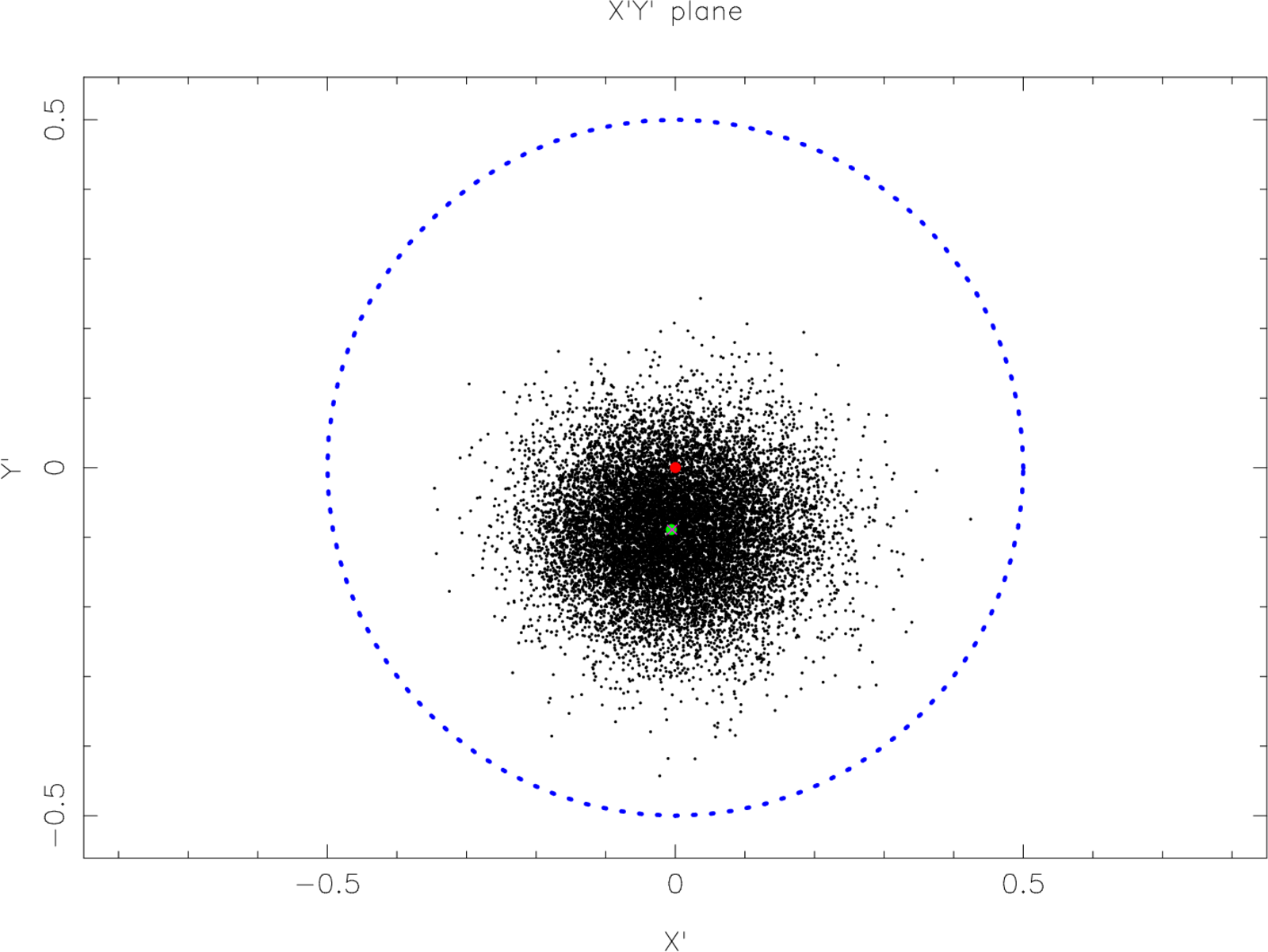
The cloud of 13517 clones of the star Gliese 710 drawn according to the covariance matrix taken from the Gaia DR2 catalogue. This cloud is projected onto the maximum scatter plane X'Y', coordinates are expressed in parsecs. The red dot is the Sun position, the green dot is the star nominal position during an encounter and the orange cross is the centroid of the clone cloud. The blue dotted circle shows the approximate extend of the cometary Oort cloud. This star parameters are known with a good precision so the cloud of clones is rather compact.
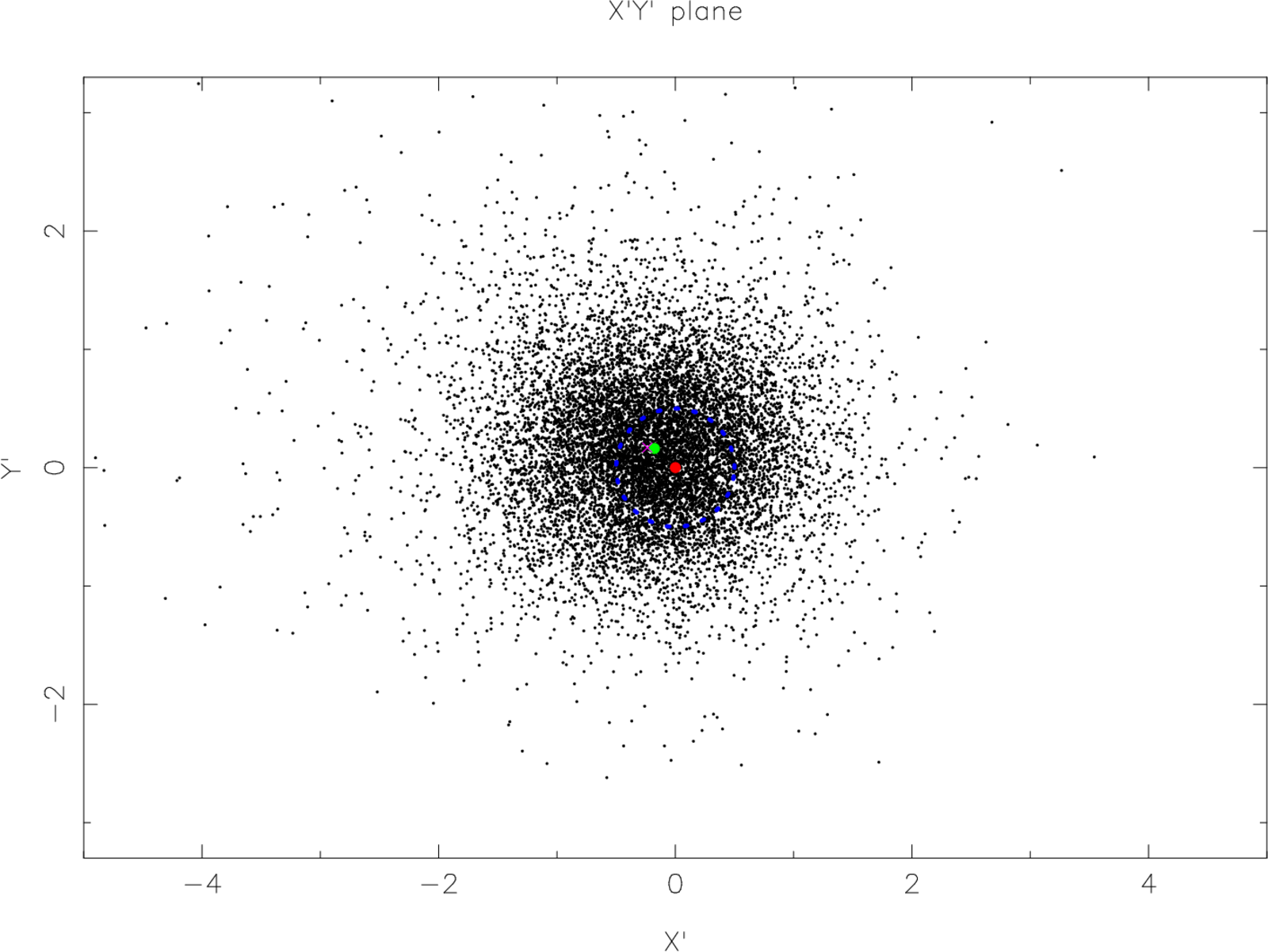
The cloud of 11327 clones of the star ALS 9243 drawn according to the covariance matrix taken from the Gaia DR2 catalogue. This cloud is projected onto the maximum scatter plane X'Y', coordinates are expressed in parsecs. The red dot is the Sun position, the green dot is the star nominal position during an encounter and the orange cross is the centroid of the clone cloud. The blue dotted circle shows the approximate extend of the cometary Oort cloud. This star parameters have the poor accuracy but the star must be studied in detail since it might have a large mass, even grater than 10 solar masses. Gliese 710 will pass the Sun even closer.

©2026 GAVIP-GC
